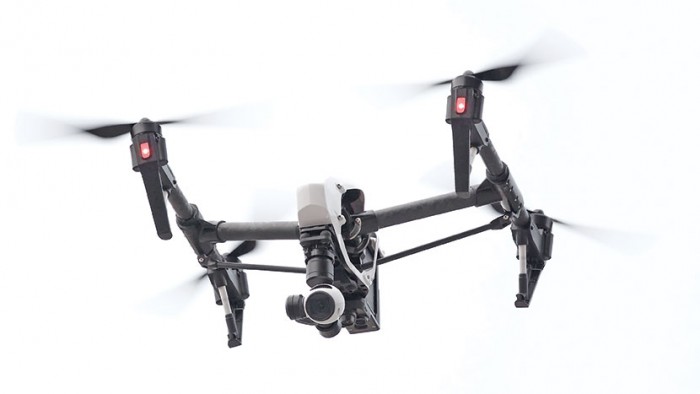 Natural Sciences
Natural Sciences
Flight Tracker

You could say that Jack Ziesing’s research really took off.
His lab experience as a student in computer and information science has given him entry into the growing industry of “unmanned aerial vehicles”—you know them as drones.
Working with assistant professor Michel Kinsy, a new member of the faculty, Ziesing, who graduated earlier this year, studied communications and control systems for drones. He put together the memory chips, processors, and circuit boards that control drones during flight.
Kinsy’s lab is trying to solve problems that could ground the drone industry. One of them is getting all parts of the drone “brains”—the chips and circuit boards that control navigation, flight patterns, and onboard memory—to work together fast enough for flight. Once airborne, the drones also must carry out complex missions such as mapping, taking photographs, or looking for specific targets.
The other hurdle is making sure that the way all those parts pass information to one another, and the way the drone communicates with an operator, are secure against hacking or takeover by third parties. Researchers want drones to operate independently by carrying out flight instructions programmed into their onboard computers, but they usually have a backup that also allows them to be controlled via radio frequencies by an operator on the ground. Both systems must be protected.
To do that, researchers have to understand a drone’s components at a fundamental level. So the work in Kinsy’s lab delves more into computer hardware and less into actual flying, at least for the time being. Ziesing’s contribution, which also served as an independent research project, was to help build circuitry that boosts performance and communication.
To hear Kinsy tell it, Ziesing is a natural with drones. Although he wasn’t the top student in his major, Ziesing had an intense curiosity and a “learn-by-doing” approach that impressed Kinsy, who arrived last year. When the spunky Ziesing showed up looking for a shot at research, Kinsy decided to give the undergraduate a spot in his lab.
 Ziesing (left) quickly proved his value and became the heart of the group, showing up after classes, on weekends and during any other time he could carve out. He dove into computer architecture and drone controls head first, learning as he went.
Ziesing (left) quickly proved his value and became the heart of the group, showing up after classes, on weekends and during any other time he could carve out. He dove into computer architecture and drone controls head first, learning as he went.
“He has a natural sense of what hardware is supposed to do,” Kinsy said. “I’m a big fan of his.”
Rather than buy them off the shelf, Ziesing taught himself how to build drones from the chips up, an important skill in the research world. He has made large drones and also “quad copters”—ones with four propellers—that fit easily in the palm of a hand. The technology is extremely flexible, and he even used it to create one with a camera, motion sensor, and buzzer to teach the family puppy to stay off the sofa.
“I used it as a device to help train the dog and entertain me,” he said. “I was having a blast with it.”
His research goal was “teaching” a drone fitted with LED lights to carry out a robotic aerial ballet through programmed instructions. The program would send it whirling across the night sky in a choreographed pattern that would appear as a word—“Oregon” or “Ducks,” for example—in a long-exposure photograph.
Although Ziesing built and tested prototypes, he didn’t complete the LED light show project before graduation. He continues to work on it while he looks for his first software job, preferably in the budding drone industry.
“(UO professors) teach you really good practices that I knew would translate over into something I wanted to do,” Ziesing said. “I just had to trust the program and let it teach me.”
—By Greg Bolt


 Twitter
Twitter Facebook
Facebook Forward
Forward